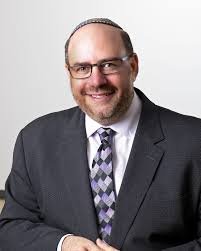Rabbi Steven Wernick knows that he is abandoning Conservative Jews on college campuses.

As CEO of the United Synagogue for Conservative Judaism since 2009, Wernick saw KOACH, the campus wing of the Conservative Movement, shut down on his watch in 2013, drawing ire from many Conservative leaders and students. Almost five years later, I caught him for an interview at the Conservative Yeshiva in Jerusalem, visiting for the Conference of Presidents of Major American Jewish Organizations.
Reduced to just 18 percent of the American Jewish population with only 11 percent under the age of 30, according to a much publicized 2013 Pew poll, the Conservative Jewish world has been in crisis for years, losing funding and members and distracted by infighting on issues like intermarriage. Since then, the void of young adult engagement has been somewhat filled by organizations like Masorti on Campus, a post-KOACH campus group, though entirely without the support of USCJ.
Growing up, I was never a USY, Ramah, or KOACH kid, unaware of the USCJ and its ideological platform for most of my life. But now, after having met students from the Jewish Theological Seminary and studying at the Conservative Yeshiva for a few weeks, I have a better understanding of the observant, yet religiously progressive and egalitarian path the Conservative and Masorti movement professes to follow.
Professing to follow, however, has not saved the movement from losing 64 percent of those raised Conservative in the United States. The 2013 Pew numbers are still casting a shadow over the future of young Conservative Jews, one that USCJ seems to have been unwilling to fight as it bleeds to other movements.
Wernick dislikes the perception of the Conservative movement as markedly not Reform or Orthodox, but otherwise unclear about its status. “…It’s parve,” Wernick joked. “It’s not milchig, it’s not fleichig. You can eat it, but who really wants to, right?” Keeping in line with USCJ’s recent rebranding as “authentic and dynamic Judaism,” he made a point to stress the “value added benefit” of Conservative Judaism in a broader sense, more than just being an identified member of a movement.
“I’m actually beginning to think about it in a meta-denominational way,” Wernick said, “Meaning that what USCJ is trying to do in leading Conservative Judaism is to reposition the movement as a platform… by which I construct the core of my Jewish identity.” In other words, for Wernick, Conservative Judaism shouldn’t be about checking off the boxes of “denominational labels” anymore. It’s a specific ideological recipe for a full Jewish life and education.
I sat down with Wernick to talk about how he plans to execute this Conservative movement identity-building project, with questions spanning issues from politics to campus engagement.
Lev Gringauz: Some people see Orthodox and Reform Judaism as having opposing political views (Reform being liberal, Orthodox being more conservative). With the polarization of society into either far right or far left politics, how does Conservative Judaism find a way to hold a middle ground? Is there an attempt to be a political Jewish middle ground?
Rabbi Steven Wernick: Look, because we are centrists in orientation, sticking out particular policy positions is really challenging. So our goal is to really talk about Jewish values that may inform how Jews participate in the political system.
The reality in which we’re living now is a polarized reality. And it’s hard for centrists to be centrists in that reality because all the activity is taking place on the ends. But it’s not sustainable long term, so eventually people will realize that the poles are taking you to disaster. You’re either going into assimilation or into conflict, and that’s not sustainable. Eventually, people will realize that they have to make their way back to the center in order to find stability. We’re in a period of paradigm shift.
As these labor pains end and a new future emerges, the expectation would be…that people will come back to the center. What you need to figure out is, at this moment when you’re having decline because the activity is moving to the ends, how do you maintain your values and help your institutions strengthen and transform themselves to be thriving into the future. Because that future will come again.
LG: There seems be a disconnect between an organization that seeks to exist in perpetuity but does not cater to young adults. Since shutting down KOACH, there has been no USCJ presence on campuses, leaving Jewish programming to Orthodox institutions like Chabad. Between the ages of 18 and married-wit- kids, USCJ has no appeal, and polls have shown that many, once they have families, choose Reform synagogues instead of Conservative. What is USCJ’s continuity plan? How are you going to engage young adults with Conservative Judaism and not lose them?
SW: I accept that criticism. I think it is a problem.
That’s part of the paradigm shift that I think is taking place: that young adulthood is lasting longer than it ever has before. Young adults live in urban communities while the majority of our synagogues are in the suburbs, and their parents still pay for their high holiday tickets, so why do I need to join a synagogue if I still have a ticket to the high holidays?
It’s just different and legacy institutions like the synagogue need to understand that, and umbrella organizations like USCJ have to do more… That being said, we have just begun another planning process.
The question that we’re asking though is: what’s the right balance between strengthening and transforming legacy institutions, and scale, meaning college, young adults, and so forth and so on. So we’ve just started to ask those questions, and I anticipate that an outcome of the planning process that we’re doing now will seek to build either greater collaborations and maybe new programming or product that re-enters that field in some way, shape, or form.
LG: What about Masorti on Campus?
SW: Masorti on campus is a grassroots organization, but its reach is really minimal. Are there young adults and college students involved in the planning process? Yes, we specifically went out to make sure that that voice was at the table, to help chart the course for our future in terms of the business plan. Is Masorti on Campus at the table? No, not specifically.
LG: Why did it take five years after KOACH for a new strategic plan?
SW: We created a strategic plan [after KOACH shut down] of what would really active Conservative presence on the campus look like. Hillel was at the table to put it together, college students were at the table, JTS, the Rabbinical Assembly, and others. We shopped it around a little bit, and we couldn’t move it forward. I accept that criticism that you shared, especially the one that comes from our most active students who feel abandoned on the campus. I mean, I hear that. And I think about it all the time. But it’s a problem that money can solve.
You have a movement that still has 20 different organizations in it and can’t, or has difficulty, coalescing around single campaigns and so forth. So that’s the reality in which we live, in which those decisions have to be made. But the planning process now is an opportunity to ask those questions over again and to see what we’ve learned. And so that the question of college and young adults, or actually I should say adults in their 20s and 30s, is on the table again. I don’t know where it’s going to end, but look, at the end of the day, if we had 5 million dollars more a year, there’d be a lot that I’d be doing in both of those areas.
And that was the other thing with Koach, is that we weren’t going to be able to do it well with the current funding level that it had, and what we saw as coming in the future. It’s just like, you know, it would’ve been a footnote on the work that we’re doing, and that doesn’t further the cause in any way, shape, or form.
Lev Gringauz is a New Voices reporting fellow studying journalism at the University of Minnesota.

